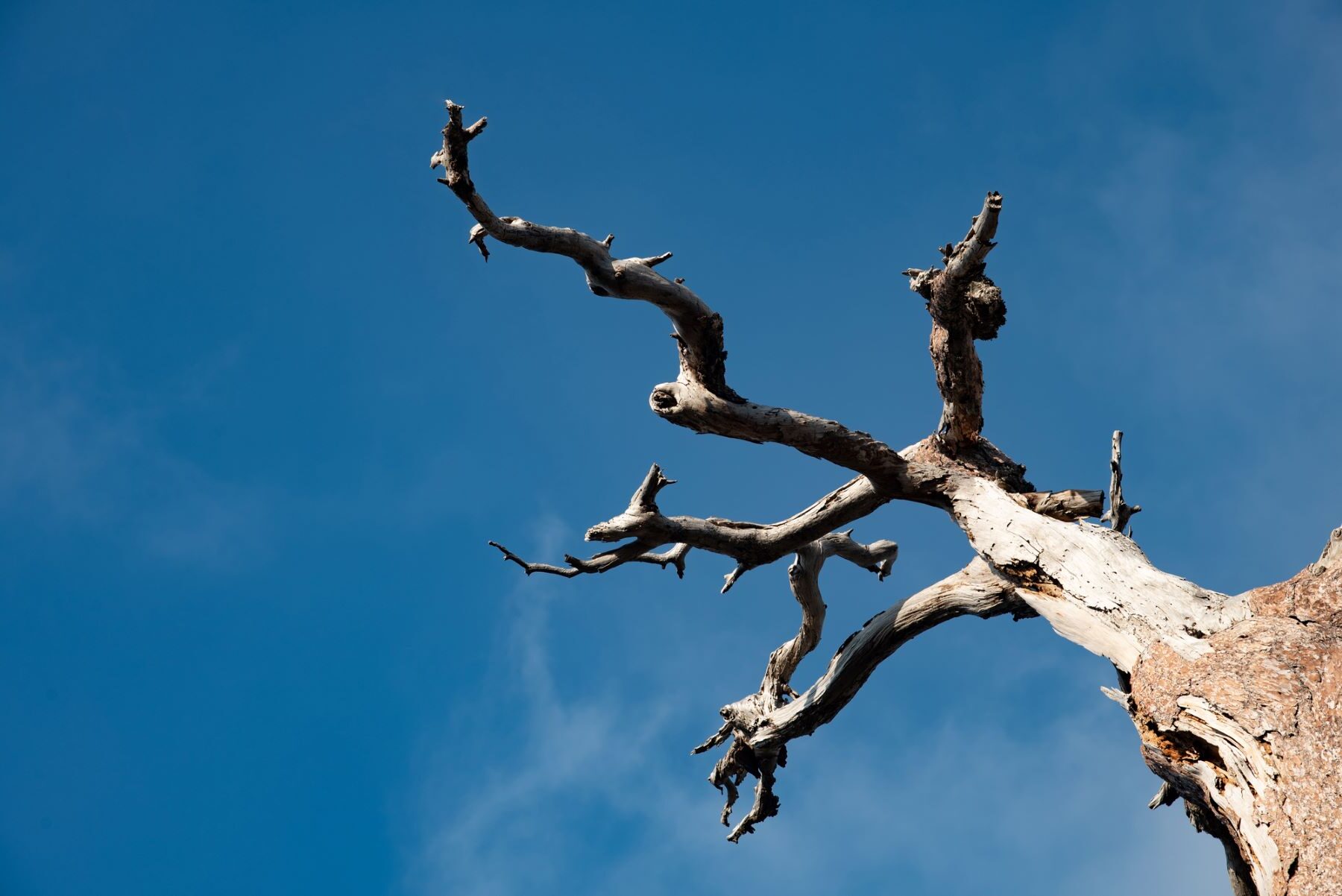Hay trees There are all kinds of species, there are huge specimens that can live for thousands of years, and there are shrubs whose life is limited to the short time that there is water in the environment in which they live. But they are all of great importance to him. ecological balance and for CO₂ captureamong many other reasons. That’s why scientists study why they die.
Some twisted pine trees in the mountains of California and Nevada, in the United States of America, They germinated about five thousand years ago. They have lived through much of human history. On the other hand, some species of ephemeral desert trees live only a few weeks.
The specialization of tissues in the form of pipes to transport water allowed some plants to grow larger. This marked one turning point in the evolution of florawhich gave rise to an important taxonomic diversification, and led to the formation of the first forests. Suddenly sunlight became the main source of competition between species.
Since then, vascular plants have spread across almost the entire planet, with the plants most adapted to the conditions in each corner of the world surviving. This has led to an enormous diversity of life strategies, which have been decisive the morphology, physiology and ecology of each species.
By small plants to others that grow hundreds of meters tall; parasitic species that never touch the ground; species that spread thanks to animals, wind or water; species that produce millions of seeds or just one, etc.

He The time it takes for a plant species to complete its life cycle (born, grow, reproduce and die) is determined by a combination of genetic, physiological, evolutionary and environmental factors.
The life of trees
Just as printers and cell phones have fallen into the trap of planned obsolescence, the lifespan of each species is determined by a genetic factor. It doesn’t matter how good an organism is in shape, if it is programmed to live for thirty years, so he will (always with some possible variation).
A clear example is people who have a life expectancy of between seventy and eighty years and no matter how well we take care, we will not live to be two hundred years old (for the time being). And the same thing happens in the forestry world: When trees reach the aging stage – or in old age – their tissues suffer from fatigue, the cells begin to die and this makes it easier for branches to fall or even for the main trunk to spill due to storms. The last moment arrives.
On the other hand, the vast majority of plants cannot move from the place where they were born and have therefore had to develop adaptations to coexist with the climatic variations of their environment. The problem arises when these conditions suddenly change or new ones arise. organisms to the ecosystem it changesand makes them more vulnerable to death.
Pathogens (especially fungi and bacteria) and forest pests are one of the leading causes of tree weakening and death. In many cases, they are newly arrived organisms that find favorable resources and conditions in which to settle and develop.
However, too we can find local species such as the hairy cork caterpillar (Lymantria dispar), which feeds on the leaves of the oaks, and which in optimal conditions can cause large demographic explosions leading to massive defoliation of the oaks, or the scolitidae that feed and make corridors along the inner layers of the cortex of others treeslike the pines, which leads to their death.
On the other hand, there are micro-organisms that occur in years of high rainfall and humidity They spread more easily and attack trees, as can be the case with Phytophtora, a fungus that attacks the roots of trees. trees This prevents them from absorbing water and nutrients properly and can ultimately cause them to die.
Loose Forest fires are one of the most typical disturbances in regions with a Mediterranean climate. Despite this zeal, they can destroy acres of forest that do not recover and change a landscape forever. Furthermore, due to climate change, fires are now becoming more frequent and larger, ending the lives of many species in the affected areas.
However, we must not forget that some species Mediterranean vegetation trees are adapted to firesuch as holm oaks and Aleppo pine, and have resistance mechanisms to high temperatures, such as refractory bark or a high capacity for regrowth. However, others, such as the black pine or the Scots pine, will hardly recover from large fires.
Extreme weather events are another sudden cause of forest death. At this time, prolonged drought is most evident and, in particular, the regions with a Mediterranean climate are the most susceptible to its effects, as they are located in areas with climate transition, between dry and temperate.
The lack of water in the substrate breaks the internal water column of the substrate trees, to make the tubes that carry water from the roots collapse to the leaves and eventually die. This process is known as embolism.
As a result of this increase in temperature and drought, forests are migrating both altitudinal and latitudinal, with the southernmost and low-lying forests being replaced by species trees more adapted to dry land conditions. It should be taken into account that flooding or strong winds are other examples of this extreme weather conditions.
Citizens can help detect the health of the forest and trees
AlertaForestal is a citizen science initiative of CREAF that monitors the health of Catalan forests with the participation of volunteers. Thanks to these ‘guardians’ of the forests, we can contribute a grain of sand to nature monitoring the impact of effects such as drought, processionary caterpillars and box tree caterpillars.
Anyone can participate in this project by simply providing horizontal photos of degraded forest landscapes through the mobile application AlertaForestal. This is a way for citizens to help scientists when it counts monitor the life, health and condition of trees and forests.

